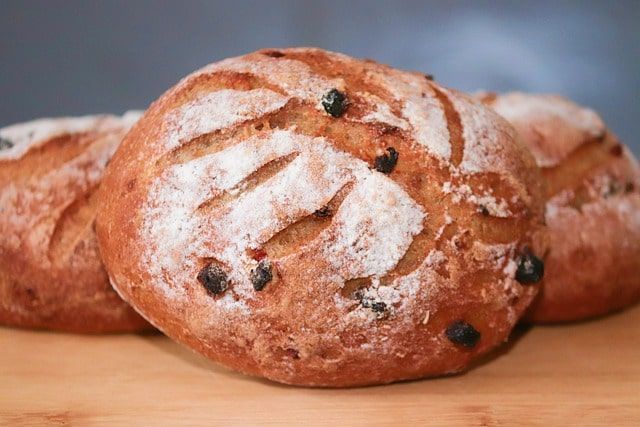More digestible bread with better flavor and aroma
If you enjoy baking, using less yeast and cold-fermenting brings new experiences for the palate, as well as in the digestibility of our bread, so it is interesting to consider this practice.

Previously we talked about the health benefits of eating bread made with sourdough; now, again with the guidance of Professor Francisco Vásquez Lara, from the Center for Research in Food and Development (CIAD), we will learn about the benefits of eating bread made with little yeast and with prolonged cold fermentation times.
One of the most frequent reasons why people tend to eat less bread is due to the feeling of stomach heaviness that some individuals experience after eating it, which is why foods made with sourdough have recently gained popularity since they are more digestible and have a lower glycemic index.
Yeast allergy?
Different clinical studies indicate that a high level of yeast in the body can cause fatigue, dizziness, and vulnerability to develop diarrhea or stomach discomfort such as indigestion and bloating. These types of allergies have been documented mainly with the yeast Candida albicans, which is present in foods such as bread, dairy products, wine, and beer, among others.
It is also believed that the immune system in many individuals is sensitive to specific variations of yeast, especially strains found in beer and bakery products. So, when these people drink beer or eat pastries in large quantities, their immune systems release histamines as a stimulus to deal with the increased yeast passing through the gastrointestinal tract, causing the aforementioned symptoms.
Eating bread without yeast?
First of all, it is important to point out that to obtain bread made without yeast or with sourdough, we are referring to very long processes: a fermentation without yeast can be done for up to twelve hours and when using sourdough it would take us days to achieve it. Here is a recipe for it.
The use of commercial yeast accelerates the fermentation process significantly since by using it we can reduce the preparation time of the dough, being able to achieve a good fermentation in up to one hour (the fermentation time will depend a lot on the baking process chosen). However, we must take into account that an inadequate fermentation can mean short leavening times that do not allow fungi present in the yeast to conclude the fermentation process and, therefore, that this process continues in the intestine, giving rise to the formation of gases or slow digestion.
Less yeast, longer fermentation time
If you like to make your own bread at home, a good tip is to use less yeast in the recipe and increase the fermentation time, as the latter allows for optimal metabolic activity in the dough for the formation of substances that contribute to flavor and aroma, as well as for prolonging the shelf life of the product (also the quality of the product is improved); the higher the fermentation rate for making bread, the fewer sugars you will have, thus reducing its caloric and sugar content.
Cold fermentation
The purpose of cold fermentation is to ensure that the maturation of the dough, after leavening at room temperature, continues in the refrigerator and thus develops aromas that are not achieved in a short fermentation. In addition to improving the taste of the bread, retarding the fermentation process in refrigeration allows us to control the times when making bread; in this way, it is possible to better plan and decide when we are ready to bake.
If you want to perform this fermentation process, it is first necessary to develop the process of integrating raw materials for kneading in the normal way and let it ferment. Once an adequate volume of dough is observed (it may vary depending on the type of bread and the recipe you are making), the bowl should be covered and kept refrigerated for 24 to 48 hours in an airtight container. The dough should be removed and allowed to rest at room temperature for approximately three hours before shaping the bread and then baking.
Cold fermentation can also be used after shaping the dough buns. For this, it will be necessary to cover them with plastic wrap and put them in refrigeration until they are going to be baked; these times can vary from 9 to 12 hours. This cold fermentation generates a crispier crust and better honeycombing, as well as a more enjoyable flavor and aroma.
As we have seen, using little yeast and cold-fermenting leads to new experiences for the palate, as well as in the digestibility of our bread, so it is interesting to consider this practice if you enjoy baking.
Author: Francisco Vásquez Lara, researcher of the Coordination of Plant-Based Food Technology at CIAD.




